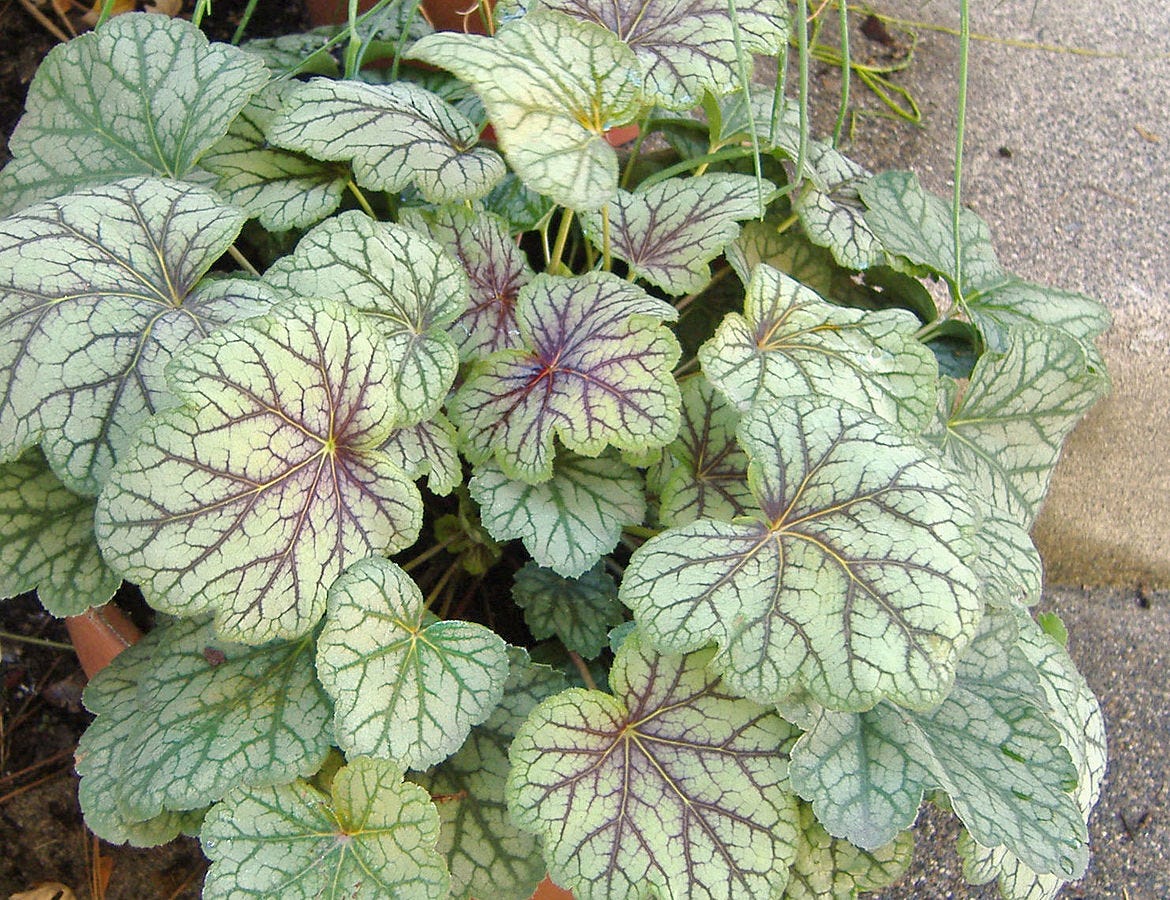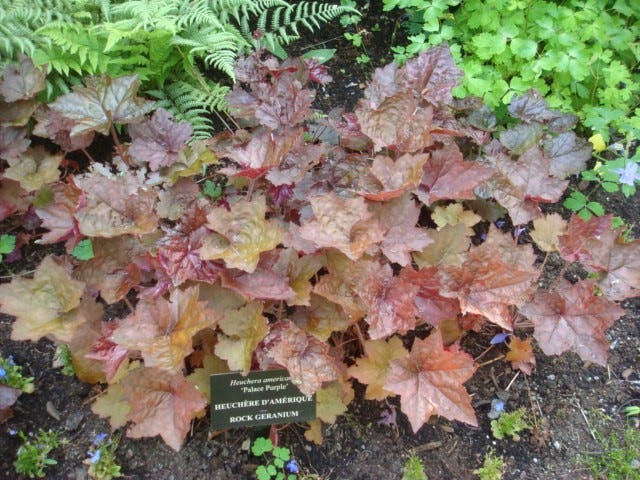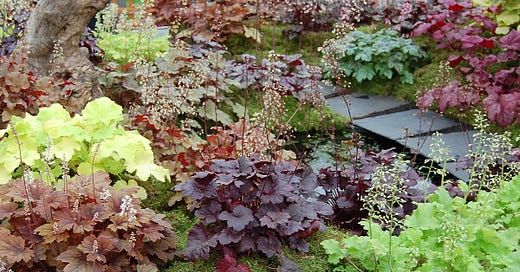How to Grow Coral Bells
The colorful leaves of coral bells are great way to add color to your shade garden.
What are Coral Bells?
Coral bells (Heuchera spp.) are flowering perennial plants that are native to North America. There are approximately 37 species of heuchera occupying different ecological niches across the continent. The most commonly grown one in our gardens is H. Americana, a shade plant.
The Native Americans used different heuchera species medicinally. They used them to treat ailments such as syphilis and to relieve pain.
Coral bells are hardy in zones 4 – 9. They grow from a woody rootstock and produce a rosette of leaves that is 12 to 18 inches wide and 12 to 15 inches tall. The leaves are 3 to 5 inches wide and very colorful. They can be green, bronze, pink, purple or variegated. Their colorful leaves are great way to add color to your shade garden.
The flowers grow in panicles which are clusters of flowers which grow on long, slender stems that can be 18 to 24 inches tall. They are bell-shaped and can be green, white, pink or red. Hummingbirds and butterflies are attracted to them. Bloom time is late spring to early summer. If you remove the flower stems when the flowers are finished, you may get a second flush of flowers.

How to Grow Coral Bells
Most gardeners purchase their coral bells as plants in the fall. They should be planted in your garden 12 to 18 inches apart. Keep them well-watered the following year as they become established in their new home. After that, you will only need to water during any dry spells. As native plants, coral bells are adapted to growing in our climate.
Coral bells can be grown in full sun but do best in partial shade. The leaves can fade or become scorched if they are getting too much sun. It’s best to grow them either in the shade or in a spot that gets morning sun only.
Heuchera prefer rich, well-drained soil that is slightly acidic pH 6.0 – 7.0. Soil that drains well is critical. If the plants are in consistently wet soil, the crowns will rot, killing the plants.
Because they are native plants and already adapted to growing here in North America, you don’t need to fertilize them. You can add a side-dressing of compost in the spring. If you want to fertilize, use a slow release fertilizer in the spring.
Coral bells have very shallow roots so in colder growing zones, you will want to add a thick layer of mulch around your plants to prevent frost heaving. Frost heaving is what happens when the soil alternately freezes and thaws during the winter and perennial plants are thrust out of the ground. If you see this happening to your plants, gently step on the root ball to force it back into the ground and then add a thick layer of mulch.

How to Divide Coral Bells
Coral bells will need to be divided every 3 to 4 years. Spring is the best time to divide your plants. Use a garden fork to gently lift your plants from the ground. Using a sharp knife or pruners, cut the rhizomes apart making sure that each new division has roots and at least one “eye” where the plant will grow from. Discard any dead or diseased pieces. Replant your divisions 12 to 18 inches apart.

How to Grow Coral Bells From Seed
You can grow coral bells from seed but if you are using seeds that you collected from your colorful hybrid plants, they will not grow into plants that resemble the parents. You can start your seeds indoors or outdoors.
To start your seeds outdoors, surface sow them in your garden in the fall. Do not cover them. They need sunlight to germinate. The seeds will germinate the following spring after the last frost. Thin your seedlings to 12 to 18 inches apart.
To start your seeds indoors, 6 to 8 weeks before your last frost, surface sow them in containers filled with moist soil. I always water my soil before planting seeds because I have found that if I water afterwards, both the soil and the seeds tend to wash away. Do not cover the seeds. They need sunlight to germinate.
The seeds will take 2 to 8 weeks to germinate. You can transplant your seedlings outdoors after your last frost. Space them 12 to 18 inches apart. They will bloom the following year.
I am an Amazon affiliate. If you purchase something using one of my links, I may earn a small commission. This will not affect the price you pay. Thanks for your support!




